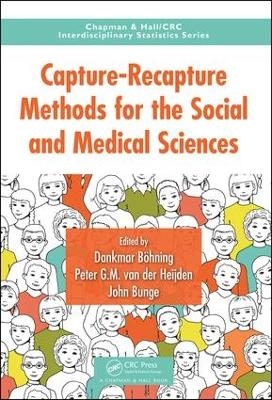
Capture-Recapture Methods for the Social and Medical Sciences
Chapman & Hall/CRC (Verlag)
978-1-4987-4531-4 (ISBN)
Capture-recapture methods have been used in biology and ecology for more than 100 years. However, it is only recently that these methods have become popular in the social and medical sciences to estimate the size of elusive populations such as illegal immigrants, illicit drug users, or people with a drinking problem. Capture-Recapture Methods for the Social and Medical Sciences brings together important developments which allow the application of these methods. It has contributions from more than 40 researchers, and is divided into eight parts, including topics such as ratio regression models, capture-recapture meta-analysis, extensions of single and multiple source models, latent variable models and Bayesian approaches.
The book is suitable for everyone who is interested in applying capture-recapture methods in the social and medical sciences. Furthermore, it is also of interest to those working with capture-recapture methods in biology and ecology, as there are some important developments covered in the book that also apply to these classical application areas.
Dankmar Böhning is Professor of Medical Statistics and Director of the Southampton Statistical Sciences Research Institute at the University of Southampton. His interests are in capture-recapture modelling, meta-analysis and research synthesis as well as mixed modelling. John Bunge is Professor of Statistics in the Department of Statistical Science of Cornell University. His interests are capture-recapture modelling, microbiome statistics, and nonclassical probability distribution theory. Peter. G.M. van der Heijden is Professor of Social Statistics at the University of Utrecht and at the University of Southampton. His interests are capture-recapture modelling for the Social Sciences and Official Statistics.
I Introductory Part
Basic concepts of capture-recapture
II Ratio Regression Models
Ratio regression and capture-recapture
The Conway-Maxwell-Poisson distribution and capture-recapture count data
The geometric distribution, the ratio plot under the null and the burden of Dengue Fever in Chiang Mai province
A ratio regression approach to estimate the size of the Salmonella infected flock population using validation information
III Meta-Analysis in Capture–Recapture
On meta-analysis in capture-recapture
A case study on maritime accidents using meta-analysis in capture-recapture
A meta-analytic generalization of the Lincoln-Petersen-estimator for mark-and-resight studies
IV Extensions of Single Source Models
Estimating the population size via the empirical probability generating function
Convex estimation
Non-parametric estimation of the population size using the empirical probability generating function
Extending the truncated Poisson regression model to a time-at-risk model
Extensions of the Chao-estimator for covariate information: Poisson case
Population size estimation for one-inflated count data based upon the geometric distribution
V Multiple Sources
Dual and multiple system estimation: fully observed and incomplete covariates
Population size estimation in CRC Models with continuous covariates
Trimmed dual system estimation
Estimation of non-registered usual residents in the Netherlands
VI Latent Variable Models
Population size estimation using a categorical latent variable
Latent class - Rasch models and marginal extensions
Performance of hierarchical log-linear models for a heterogeneous population with three lists
A multidimensional Rasch model for multiple system estimation where the number of lists changes over time
Extending the Lincoln-Petersen estimator when both sources are counts
VII Bayesian Approaches
Objective Bayes estimation of the population size using Kemp distributions
Bayesian population size estimation with censored counts
VIII Miscellaneous Topics
Uncertainty assessment in capture-recapture studies and the choice of sampling effort
| Erscheinungsdatum | 16.08.2017 |
|---|---|
| Reihe/Serie | Chapman & Hall/CRC Interdisciplinary Statistics |
| Zusatzinfo | 121 Tables, black and white; 80 Line drawings, black and white; 2 Halftones, black and white; 82 Illustrations, black and white |
| Sprache | englisch |
| Maße | 178 x 254 mm |
| Gewicht | 997 g |
| Themenwelt | Geisteswissenschaften ► Psychologie |
| Mathematik / Informatik ► Mathematik | |
| Medizin / Pharmazie ► Medizinische Fachgebiete ► Psychiatrie / Psychotherapie | |
| Studium ► Querschnittsbereiche ► Epidemiologie / Med. Biometrie | |
| ISBN-10 | 1-4987-4531-8 / 1498745318 |
| ISBN-13 | 978-1-4987-4531-4 / 9781498745314 |
| Zustand | Neuware |
| Haben Sie eine Frage zum Produkt? |
aus dem Bereich


